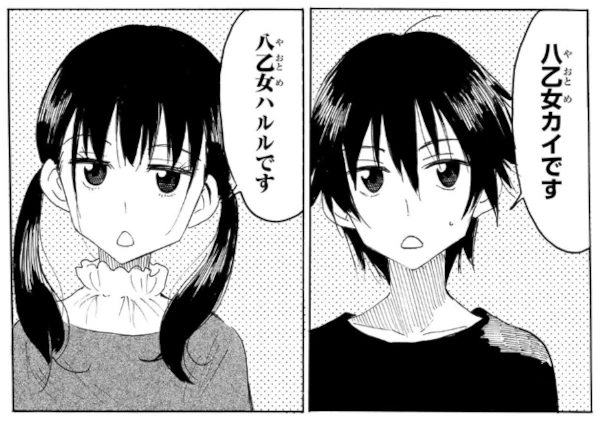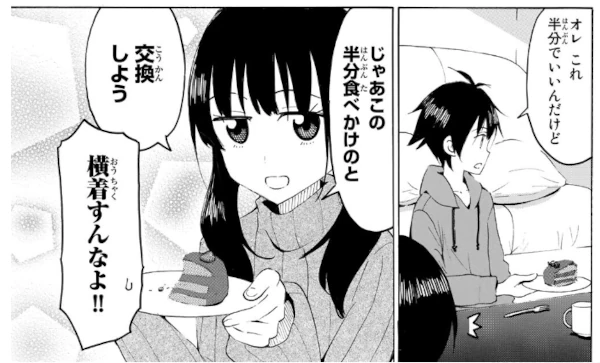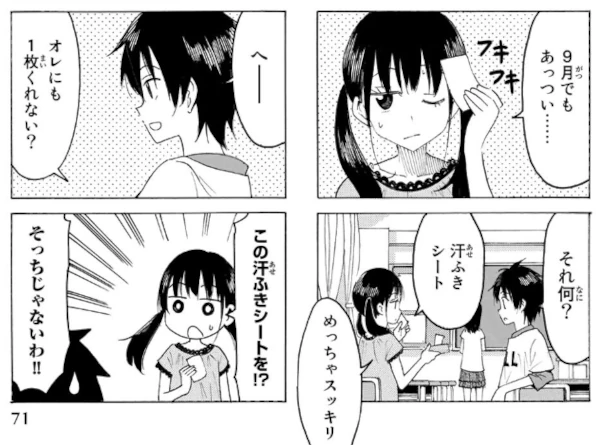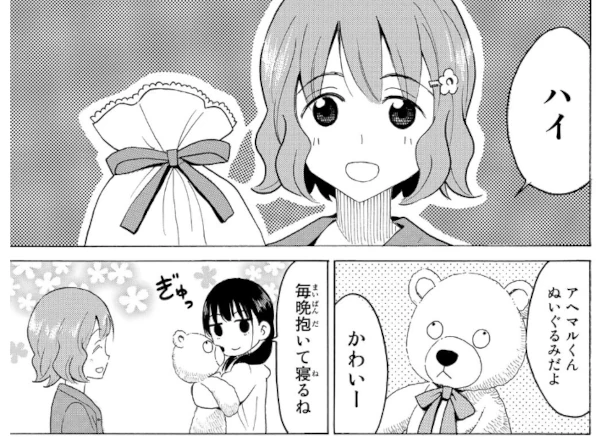This time, we’re introducing Yaotome×2—a charming slice-of-life comedy that lets Japanese learners practice everyday expressions in a fun, easy-to-read format.
Work Information

Yaotome×2(八乙女×2)
Author: Ujiie Tozen
Publisher: KODANSHA
Amount of text: sparse
Challenge level: ★
Latest volume : Vol.3(Feb.2025 / Ongoing)
Story overview
Kai Yaotome, a 6th grader in elementary school. One day, a slightly unusual girl moves into the apartment next door!? He’s an elementary schooler, so of course he eats school lunch, has likes and dislikes, sometimes forgets things… because that’s what being a kid is all about. And since she’s the next-door neighbor, they casually visit each other’s homes, and even their parents become friends… because that’s what being neighbors is all about.
From Tozen Ujiie, the creator of Seitokai Yakuindomo—comes a brand-new comedy about elementary school neighbors!
The Appeal of This Manga
This lighthearted comedy follows a boy and girl, both with the same last name by coincidence, who also end up sitting next to each other in the same class. It portrays their fun everyday life at elementary school with a unique atmosphere. The children sometimes act a little more mature than their age, creating a curious distance between them. It’s not exactly romance, but neither is it a purely innocent slice-of-childhood depiction. Instead, the manga offers a fresh, “somewhere in-between” vibe that feels new and distinctive. The elementary school arc wraps up in just one volume, and from volume 2 onward, you can look forward to watching the characters grow as they move into junior high.

Why this manga is suitable for learning Japanese
This manga is not only entertaining but also highly recommended for Japanese learners for several reasons.
Simple, light text
The overall text volume is small, making it easy to read without feeling overwhelming. Since the story depicts elementary school daily life, the conversations are fairly simple and grounded in everyday Japanese.

A 4-panel format—perfect for beginners
As a 4-koma (four-panel) manga—occasionally switching to short story chapters—the work is very accessible for beginners. Plus, all kanji (except for the margin commentary) are written with furigana, making it especially friendly for learners starting out.

Culture Spotlight
A Familiar Face Next Door:Childhood Friends as a Unique Trope in Japanese Stories幼なじみ

In Japanese manga and anime, the idea of the osananajimi (幼なじみ)—literally “childhood friend”—is one of the most enduring and beloved tropes. An osananajimi is not just any friend: it’s someone who grew up alongside the protagonist, often living next door or attending the same school from an early age. This shared history creates a deep sense of familiarity, comfort, and sometimes unspoken affection.
For Japanese audiences, the osananajimi trope resonates strongly with cultural values of community, continuity, and long-term relationships. It’s a reminder of a simpler time when bonds were formed naturally in the neighborhood or schoolyard, before the complexities of adult life set in.
More than Just “Friends”
The osananajimi is often portrayed as a key figure in love triangles or coming-of-age stories. Because of their shared past, the childhood friend knows the protagonist better than anyone else—sometimes even more than the protagonist knows themselves. This can lead to moments of tension:
・Will the protagonist see their osananajimi as “just a friend”?
・Or will they recognize deeper feelings hidden beneath years of familiarity?
In Western stories, romantic relationships often spark from new encounters, but in Japanese media, the osananajimi trope explores the drama of relationships rooted in history and memory.
Classic Works Featuring Osananajimi
One of the most famous examples is Touch (タッチ) by Mitsuru Adachi, a legendary baseball and romance manga. The story follows twin brothers and their childhood friend Minami, weaving sports, youth, and bittersweet love. Minami embodies the osananajimi archetype—supportive, caring, but also part of a complicated love triangle.
Other examples include:
・Ano Hi Mita Hana no Namae wo Bokutachi wa Mada Shiranai (Anohana) – A group of childhood friends reunited by loss.
・Detective Conan (名探偵コナン) – While best known as a mystery series, it also highlights the long-standing bond between Shinichi and his childhood friend Ran, blending suspense with subtle romance.
・Chihayafuru (ちはやふる) – Centered on the world of competitive karuta, the series explores the deep ties and rivalries among childhood friends as they grow together through both sport and emotion.
These works show how the osananajimi trope spans genres beyond romance, appearing in mysteries, sports, and coming-of-age stories, always emphasizing the enduring impact of childhood bonds.
Why “Osananajimi” Feels So Japanese
The trope carries uniquely Japanese nuances:
・Proximity: Growing up in close-knit neighborhoods or attending the same schools.
・Shared routines: Walking to school together, eating school lunches, doing summer homework side by side.
・Unspoken bonds: A sense of obligation, nostalgia, and comfort that outsiders can’t easily match.
This mix of everyday normalcy and deep emotional potential makes the osananajimi more than just a character type—it’s a cultural symbol.
What It Means for Learners
For Japanese learners, understanding osananajimi offers a window into both language and culture. It’s a loanword you’ll see untranslated in English fandom spaces, just like “isekai” or “reijo.” Recognizing it not only helps you follow conversations about anime and manga, but also reveals something about Japanese society: how long-term bonds and everyday familiarity shape relationships.
When you see an osananajimi character, remember—it’s not just “the childhood friend.” It’s a role packed with cultural meaning, nostalgia, and emotional possibility.
A Little Warning
Occasional adult humor
Although the series is centered on elementary school life, it sometimes includes risqué jokes aimed at older readers. This edginess is part of the manga’s charm, but if you expect only pure, innocent depictions of children’s daily lives, you might be caught off guard.

Work Information

Yaotome×2(八乙女×2)
Author: Ujiie Tozen
Publisher: KODANSHA
Amount of text: sparse
Challenge level: ★
Latest volume : Vol.3(Feb.2025 / Ongoing)
Here’s a safe and convenient way to purchase Japanese manga.
This Blog’s ConceptIn this blog, we are introducing manga that are not only highly captivating but also ideal for Japanese language learners. Studying Japanese through manga is both fun and effective. Manga allows you to understand the subtleties of keigo (honorifics), teineigo (polite speech), and casual conversation in Japanese. We hope you find works that match your interests and use them to enhance your Japanese learning journey.